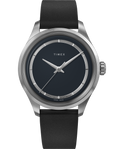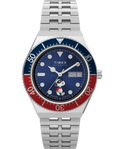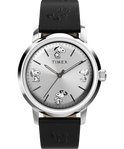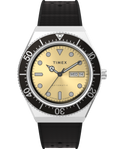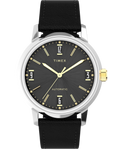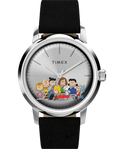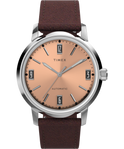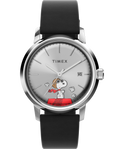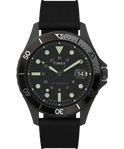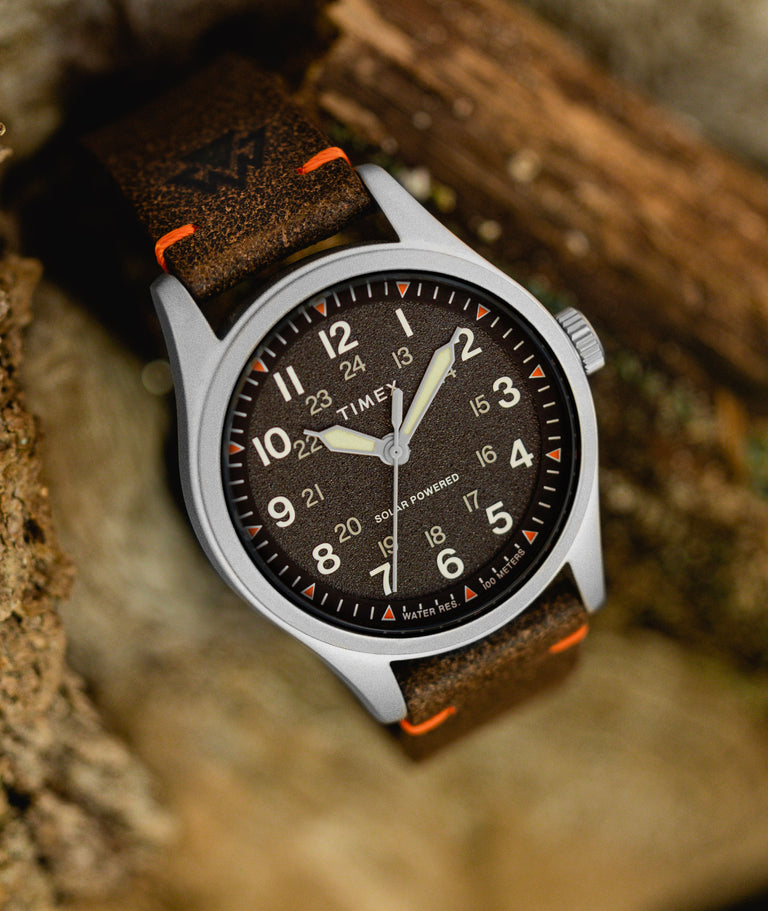Over the years, watches have evolved from simple timekeeping pieces to sophisticated accessories that complete your outfit. But, beyond their stylish exteriors, each watch tells a unique story through its movement.
Have you ever looked at your favorite watch and wondered what makes it tick? Or perhaps, like many watch enthusiasts, you've thought about how all the intricate parts work together to accurately tell time?. Lucky for you, we’re exploring the different types of watch movements to answer the question "How do watches work?"
Whether powered by batteries, harnessing solar energy, or driven by intricate gears, each wristwatch operates in a distinct way to keep you punctual on the daily. Continue reading on to learn about the different types of watch movements and find out which one will power your next timepiece.
How A Watch Is Powered: The Basics
The power of a watch lies in its movement. This is what makes it “tick”.
Today’s timepieces feature a wide array of movements—each contributing to the uniqueness of the watch. There are three types of watch movements: quartz, mechanical, and solar, with automatics being a sub-set of mechanical.
Quartz movements are powered by a battery and are considered a pinnacle of precision. Mechanical hand-wind movements require manual winding to transfer power to the mainspring and operate the watch. Automatic watches, much like mechanical hand-wind watches, rely on a wound mainspring for power. However, they also have a rotor that ingeniously spins as you move your arm, eliminating the need for manual winding. And lastly, solar watches move by converting light energy into electrical power.
By learning the differences between watch movements, you’ll be able to confidently answer the question “how do wristwatches work?” and make a more informed purchase. This knowledge will allow you to select a timepiece that best fits your needs.
Let’s dive into the specifics of how each of these watches run.
Mechanical Watches
The oldest type of movement in watchmaking is mechanical movement. Mechanical watches, which include both hand-wound and automatic watches, operate without the need for batteries. Let’s start with hand-wound watches.
Hand-Wound Watches
Hand-wound watches are powered by a mainspring, a coiled wire of metal that stores energy when wound manually using the crown. As you turn the crown, it tightens the mainspring. The escapement mechanism regulates the release of energy, causing the gears to move and the hands to tick.
The advancements in watchmaking introduced a watch movement designed to be automatically wound through the wearer's wrist motion. This is known as the automatic or self-winding movement.
Automatic Watches
Automatic watches can trace their roots back to the 1770s and design of a revolutionary Swiss watchmaker. A seamless blend of functionality and tradition, these timepieces are a sub-set of mechanical watches celebrated for their intricate self-winding mechanism. The uniqueness of automatic watches is that they use the energy derived from your natural movement, eliminating the need for batteries. This is why they are also known as self-winding watches. Today, automatic watches have grown to be a favorite among watch lovers worldwide.
How Do Automatic Watches Work?
At the heart of an automatic watch is a small metal weight known as a rotor. This component freely self-winds within the watch as you move your arm. As the rotor spins, it winds the mainspring, which serves as a power reserve and ultimately powers the watch. Any excess energy in the mainspring is stored and utilized when the watch is not being worn. However, the stored energy will deplete over time, and the watch will stop functioning when not in use.
Manual winding is unnecessary if an automatic watch is worn enough. So, to keep your automatic’s rhythm alive, simply wear it regularly. Before wearing your automatic watch, just remember to check the time and make sure it’s correct. If it’s been a while since the watch graced your wrist, you may need to manually wind it and reset the time.
Our Top Automatic Watch Pick
The Marlin® Automatic
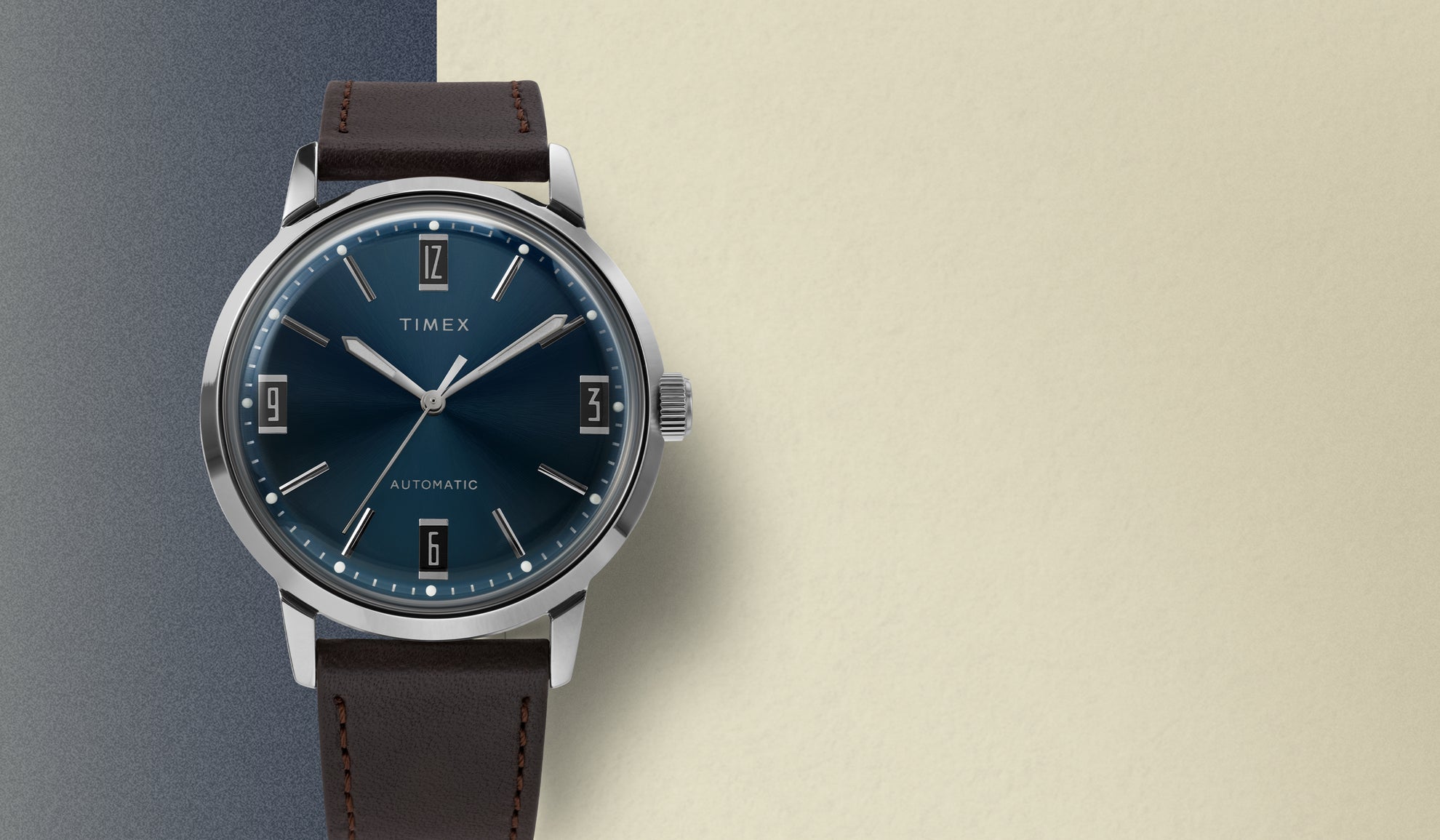
For those who appreciate the fine craftsmanship of automatic watches, the Marlin Automatic is a timeless piece that exemplifies the charm of mechanical timekeeping.
The Timex Marlin Automatic collection is a modern take on our beloved 1960s Marlin design, and this 40mm Marlin boasts a classic navy dial and a sleek brown leather strap sourced from the S.B. Foot Tanning Company. It’s built with a period-correct domed acrylic crystal and sleek stainless-steel case, paying homage to our rich watchmaking heritage. But what truly sets this timepiece apart is the 21-jewel automatic movement ticking inside.
Powered by your very own motion, this tried-and-true mechanism can store up to 40 hours of energy, making it the perfect choice for those who lead active lifestyles.
If you happen to find yourself motionless for more than 40 hours, simply wind the watch using the crown until you feel resistance, set the time, and place it back on your wrist.
Quartz Watches
Japanese watchmakers introduced the marvel of quartz movements in the 1960s. In the present day, quartz watches have emerged as the top choice for timekeeping, celebrated for their unmatched precision. As the name implies, quartz watches make use of a battery and quartz crystals as a power source. Let’s delve into how a quartz watch’s battery works to ensure accurate timekeeping.
How Do Quartz Watches Work?
Inside a quartz watch, the battery (typically silver oxide or lithium-ion cells) sends a constant electrical current to the integrated circuit and quartz crystal, setting off vibrations at a precise frequency of 32,768 times per second. These vibrations serve as the basis for measuring time in quartz watches.
Afterward, the integrated circuit in a quartz watch sends a sequence of pulses to a small motor. The motor, in turn, transforms these pulses into rotational motion. This is what sets the series of gears into motion, which ultimately drives the watch hands on the dial. The predictability and regularity of the quartz crystal’s oscillations are what makes these watches highly accurate timekeepers.
Unlike mechanical watches, which require frequent winding, quartz watches use such little power that a single battery can last for several years. It's typical for quartz watches to need a battery replacement every 1-3 years, although the specific interval may vary depending on the movement. The battery's longevity is influenced by factors such as the movement type, usage patterns, and overall quality. But don’t fret! You can always keep time accurate by changing your watch battery. Explore our guide on how to change a watch battery to make sure yours continues to stand the test of time.
A well-maintained quartz watch can have a lifespan of 30 years. This longevity makes a quartz watch a practical choice if you prefer a low-maintenance timepiece that still offers reliable timekeeping.
Our Top Quartz Watch Pick
Q Timex® GMT
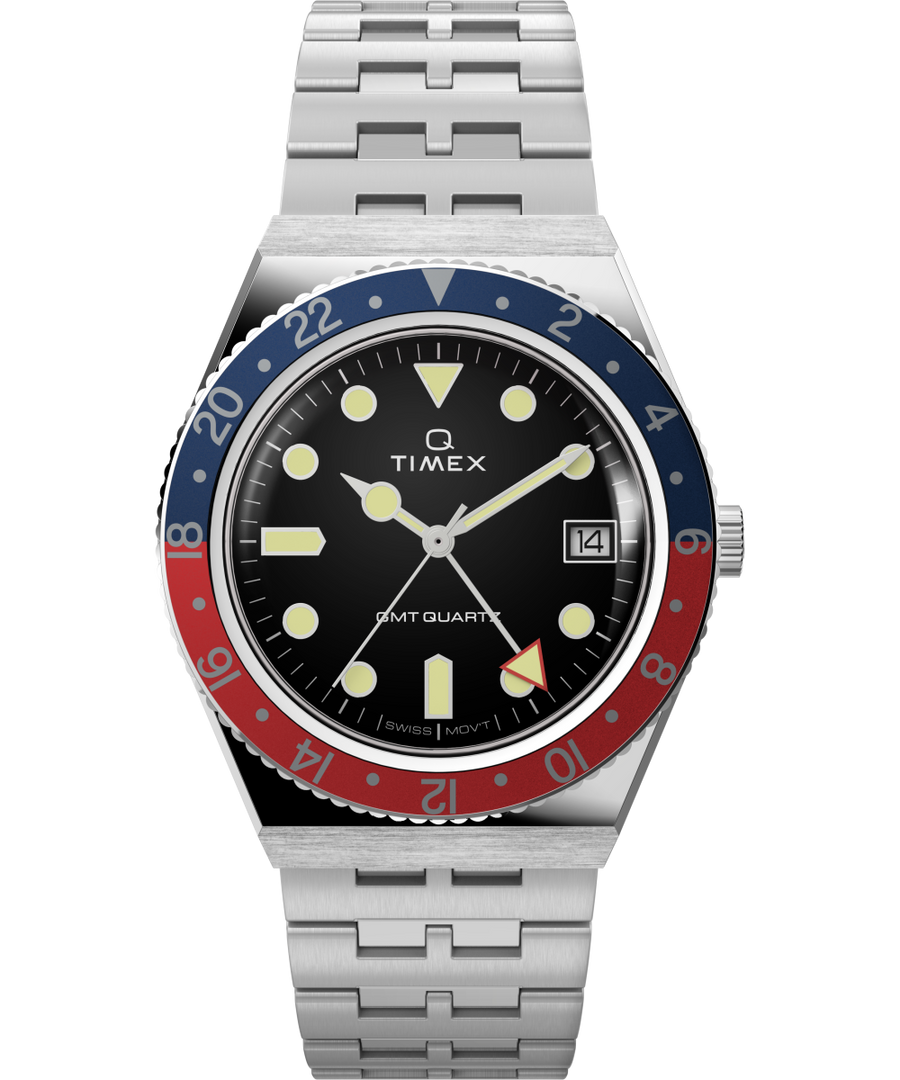
Our Q Timex GMT is proof of how dependable the quartz movement is. It boasts a modern upgrade with its Swiss-made quartz movement, ensuring accurate timekeeping. With its iconic design elements, including a black dial, red and blue rotating bezel, and functional battery hatch, the Timex Q Timex GMT is a true classic that combines tradition with modern innovation.
Solar Watches
Solar watches stand as the most sustainable and eco-friendly watch type, making them the obvious choice if you’re trying to lessen your carbon footprint. This is because solar watches harness energy from light sources, such as the sun or artificial lighting, for power. In turn, this eliminates the need for frequent battery replacements and reduces waste.
How Do Solar Watches Work?
Solar watches use a solar cell that converts light energy into electrical power. These solar cells can be found behind semi-transparent dials or even adorning the dial itself.
When light falls on the surface of the cell, it is absorbed, collected, and transformed into a sustainable electric charge. Energy is stored in the “energy cell” of the watch, which acts as a capacitor, holding the energy to run the movement. Much like quartz watches, solar watches use an integrated circuit and a quartz crystal for accurate timekeeping. The generated electricity is then transferred to a rechargeable battery, eliminating the need for battery replacements.
In regard to longevity, solar watches emerge as triumphant as continuous exposure to light also creates a continuous cycle of recharging.
Our Top Solar Watch Pick
Timex Expedition North® Field Solar

Take timekeeping to the next level by tapping into the renewable energy of our Expedition North Field Solar, which harnesses the power of any light source to keep you going. With a smaller 36mm case size, this watch is a nod to vintage military-issue timepieces, making it the perfect choice for those who appreciate classic design.
But don't let its retro profile fool you - this watch also features many contemporary design elements. Its reliable solar movement provides up to a 4-month power reserve, while its anti-reflective sapphire crystal, 100 meters of water resistance, screw-down case back and crown, luminescent hands and dial markings, and comfortable brown Ecco™ DriTan™ leather strap made with eco-friendly methods ensure that it's as functional as it is stylish.
Key Takeaway
The world of watches harmoniously blends precision engineering, elegance, and innovativeness. If you’re still wondering “how do watches work?”, the answer can be simplified: watches work by harnessing different powering mechanisms, such as the oscillation of quartz crystals, stored solar energy, or hand-wind or automatic mechanical movements, to power their timekeeping.
If you’re interested in exploring more about high-quality watches, shop our diverse collection of men's automatic watches. You can also check out our selection of solar-powered watches–each one is a testament to responsible timekeeping.
SHOP OUR TOP PICKS:



